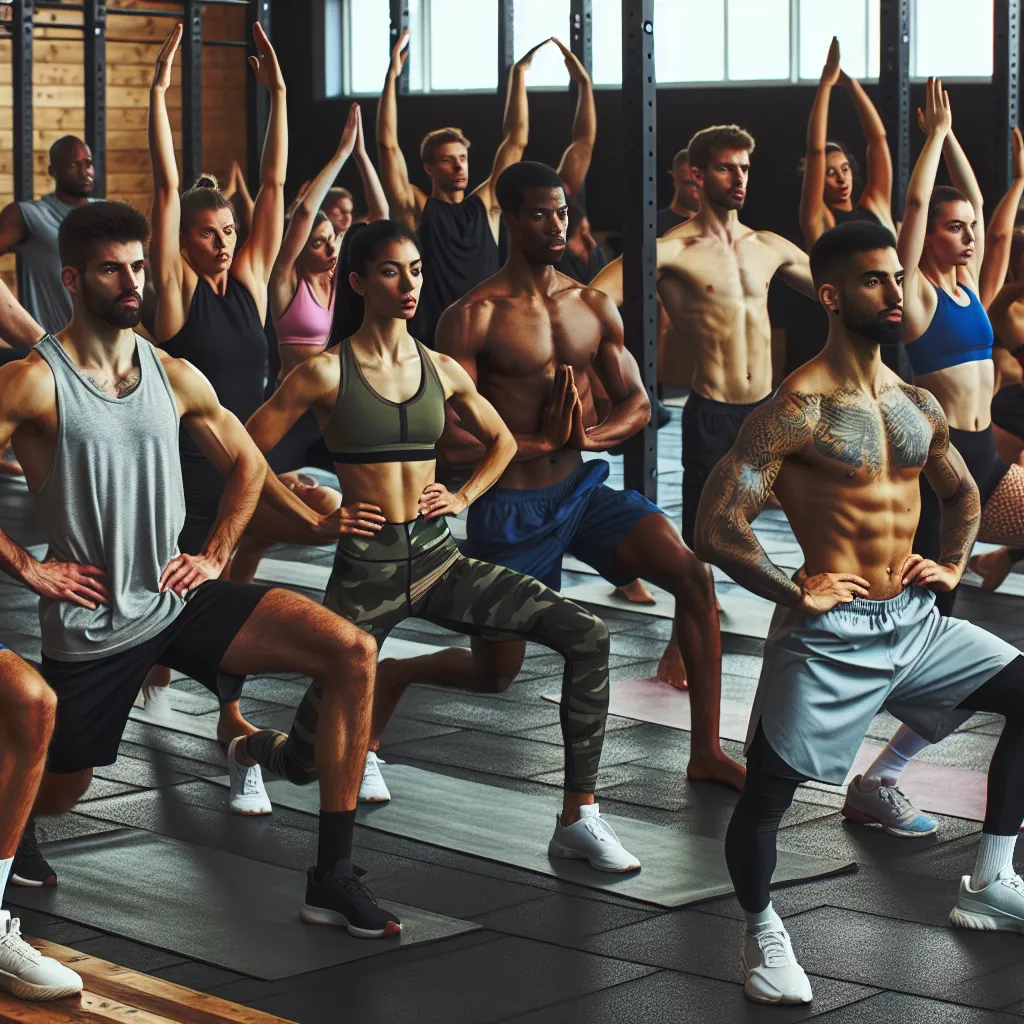In the realm of sports and fitness, the term “yoga for athletes” has gained significant traction. This specialized form of yoga is tailored to meet the unique needs of athletes, enhancing their performance and overall well-being. Let’s delve into this concept and explore its relevance to IELTS vocabulary.
Definition: Yoga for athletes refers to a modified yoga practice designed specifically for sportspersons to improve flexibility, balance, strength, and mental focus.
Part of Speech: Noun phrase
Pronunciation: /ˈjoʊɡə fɔːr ˈæθliːts/
1. Context and Usage
Examples in Context
-
The football team incorporated yoga for athletes into their training regimen to enhance flexibility and prevent injuries.
Analysis: This sentence demonstrates how yoga for athletes is used as part of a comprehensive training program in team sports. -
Many Olympic swimmers practice yoga for athletes to improve their breath control and core strength.
Analysis: Here, we see the application of yoga for athletes in individual sports, highlighting its benefits for specific athletic skills. -
The sports physiotherapist recommended yoga for athletes as a recovery method after intense workouts.
Analysis: This example shows how yoga for athletes is valued in the medical and rehabilitation aspects of sports. -
The university’s athletic department offered a specialized yoga for athletes course to all varsity team members.
Analysis: This sentence illustrates the growing recognition of yoga for athletes in academic and institutional settings. -
Professional basketball players often credit yoga for athletes with extending their careers and reducing injury rates.
Analysis: This example highlights the long-term benefits of yoga for athletes in professional sports.
Common Contexts
Yoga for athletes is frequently encountered in discussions about:
- Sports training and conditioning
- Injury prevention and rehabilitation
- Mental preparation for competitions
- Recovery and relaxation techniques for sportspersons
- Holistic approaches to athletic performance
IELTS Frequency
In IELTS exams, “yoga for athletes” may appear in:
- Reading passages about sports science or alternative training methods
- Listening sections discussing fitness trends or athlete interviews
- Writing Task 2 essays on topics related to sports and health
- Speaking Part 3 when discussing sports, fitness, or modern lifestyle trends
2. Vocabulary Analysis
Word Structure
- “Yoga” (noun): Ancient physical and spiritual practice
- “for” (preposition): Indicating purpose or benefit
- “Athletes” (noun): Persons trained or skilled in exercises, sports, or games requiring physical strength, agility, or stamina
Synonyms and Antonyms
Synonyms:
- Athletic yoga (/æθˈletɪk ˈjoʊɡə/): A term emphasizing the sporty nature of this yoga practice.
- Sports yoga (/spɔːrts ˈjoʊɡə/): Another way to describe yoga tailored for athletes.
- Performance yoga (/pərˈfɔːrməns ˈjoʊɡə/): Highlighting the focus on enhancing athletic performance.
Antonyms:
- Traditional yoga (/trəˈdɪʃənl ˈjoʊɡə/): The original form of yoga not specifically adapted for athletes.
- Restorative yoga (/rɪˈstɔːrətɪv ˈjoʊɡə/): A gentle form of yoga focused on relaxation rather than athletic performance.
3. Memory Techniques
Mind Map
Create a mind map with “Yoga for Athletes” at the center, branching out to related concepts:
- Physical Benefits: Flexibility, Strength, Balance
- Mental Benefits: Focus, Stress Reduction, Mindfulness
- Applications: Pre-competition, Recovery, Injury Prevention
- Sports: Swimming, Running, Team Sports
Storytelling
Imagine a star athlete struggling with injuries. They discover yoga for athletes, which transforms their training routine. Through consistent practice, they enhance their flexibility, reduce injuries, and achieve peak performance, ultimately leading their team to victory.

4. Practice Exercises
Application in IELTS
-
Writing Task 2: “Some people believe that traditional sports training is sufficient for athletes. Others argue that alternative methods like yoga for athletes are essential. Discuss both views and give your opinion.”
-
Speaking Part 3:
Q: “How do you think modern athletes’ training differs from those in the past?”
A: “One significant difference is the incorporation of alternative training methods like yoga for athletes. This practice helps modern athletes improve flexibility and mental focus, which may not have been emphasized in traditional training regimens.” -
Listening Practice: Create a mock interview with a professional athlete discussing their training routine, including yoga for athletes.
-
Reading Exercise: Develop a passage about the evolution of sports training, featuring yoga for athletes as a modern innovation.
Repetition and Review
- Use flashcards with “yoga for athletes” and its definitions, synonyms, and example sentences.
- Incorporate the term into your daily vocabulary by discussing sports and fitness trends with peers.
- Review related terms like core stability and dynamic stretching to build a comprehensive understanding of athletic training vocabulary.
Conclusion
Understanding and effectively using the term “yoga for athletes” can significantly enhance your IELTS performance, especially in tasks related to sports, health, and modern lifestyle trends. This specialized practice exemplifies the evolving nature of athletic training and offers a rich vocabulary context for discussing physical fitness and performance optimization.
We encourage you to practice using this term in your English conversations and writings. Share your experiences or questions about incorporating “yoga for athletes” into your IELTS preparation in the comments below. Remember, mastering such specific vocabulary not only improves your language skills but also demonstrates a broader understanding of contemporary topics, which is crucial for success in the IELTS exam.